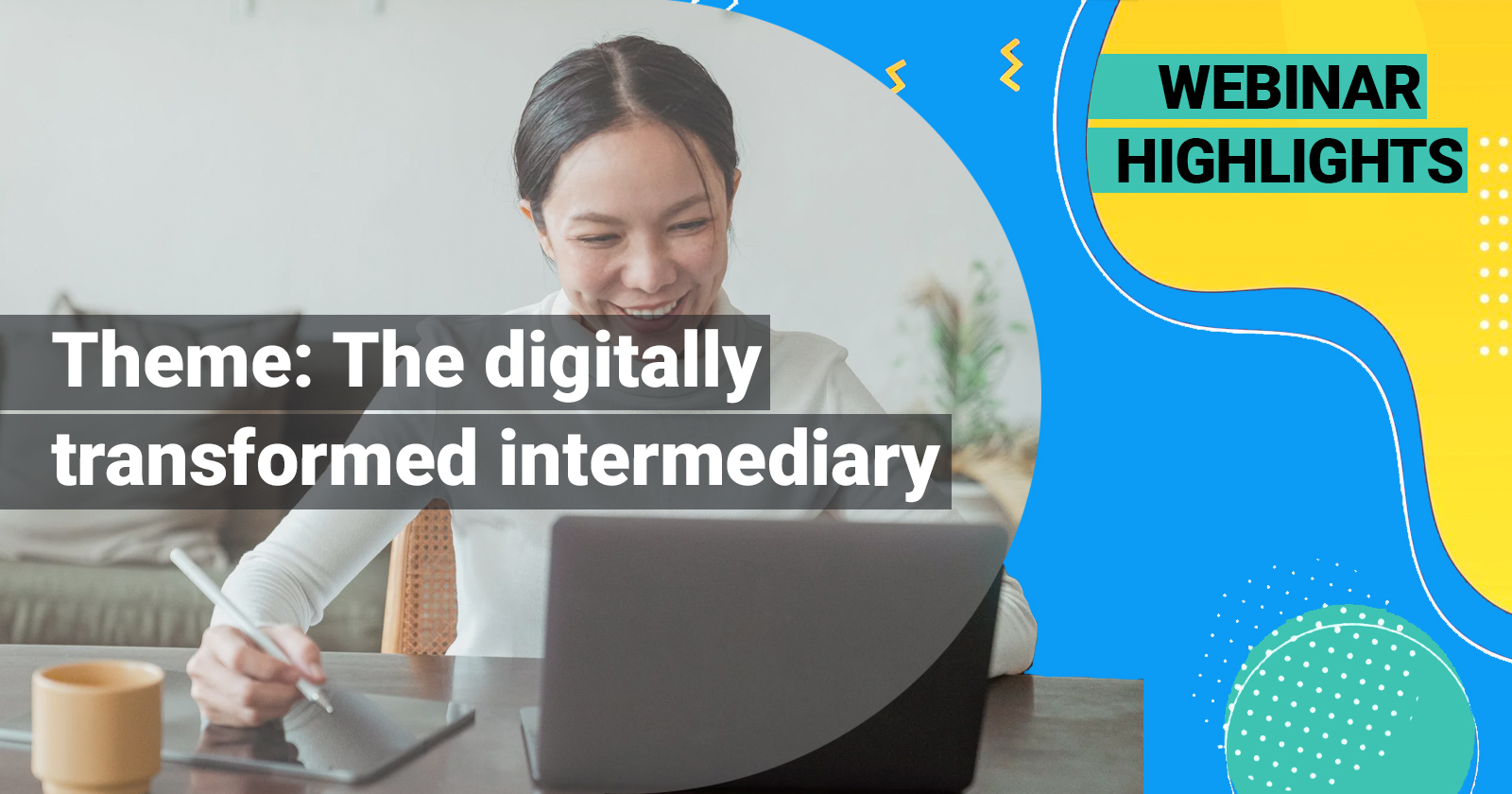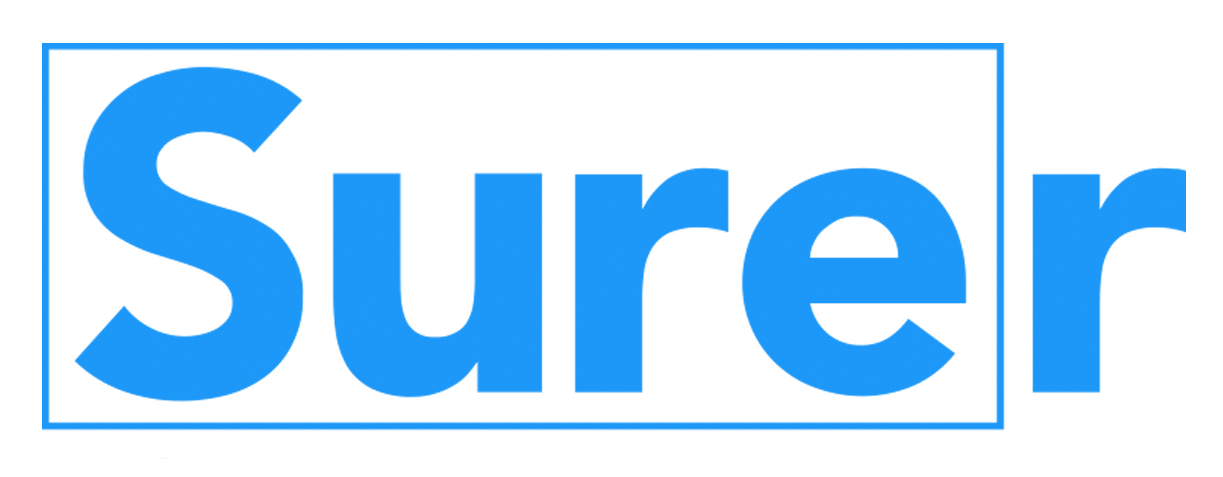
Thank you to everyone who attended this webinar! As always, fret not if you missed out on this webinar. This article will highlight some of the key insights shared at the webinar. As shared at the webinar, we are excited to announce that our biggest feature release yet – Personal Website Builder – is now available to ALL Surer users for FREE! With the theme of the webinar being ’The Digitally Transformed Intermediary’, we broke the webinar down into four key segments: It was shared that the above four segments are matched back to a deal-closing funnel, from lead generation, to qualification and finally closing. The seminar started with a sharing of some pain points that team at Surer had identified across its survey and user research. A survey conducted in November 2022 found that the top pain point faced by intermediaries is the difficulty in getting quotes due to slow/non-replies. It was further shared that in a user research conducted: Understanding the problem to be solved is as important as providing the solution – this helped shed light on where digital transformation can play a role as a solution. The topic then shifted on the practicalities of getting going with digital transformation, starting with embracing ways to better market oneself and specifically, through content creation. In terms of content creation, we shared that it should not be something that intermediaries should fear or think of as ‘I am not an expert in content creation – how?’ Rather, intermediaries already have very key knowledge and experience in the space and sharing any of these WOULD BE good content. The key points shared on this front: It was further shared that intermediaries should consider digital transformation for good reasons and not just because it is a buzzword. The speaker used the analogy of ‘adding chill to laksa’ and said
You add chilli to your laksa to make it spicier. And you do it because you like it spicier. Not because you see everyone adding chilli and you just follow suit right?
Essentially, trying to drive home the point that one should not just follow a trend just because it is a trend! Do it because it helps the business. Know your why… then think about how WHY Expand your network digitally to get more referrals The above table was shared to illustrate identifying the ‘why’ and then determining the ‘how’. Going back to the Laksa analogy… the ‘WHY’ = I want my laksa to be spicier. the ‘HOW’ = add chilli! Tech is available to help rid process and sales efficiency barriers. But how you leverage it and how the users are trained to use it will require effort. The speaker then shared a few more case studies to answer the questions of ‘Why digitise your business?’ citing these as examples of how the industry is building tech to support not disrupt the business of an intermediary. Article referenced: 2022 insurance industry outlook Article referenced: How Agents and Insurtechs Can Work Together Article referenced: 5 reflections on the insurance industry in 2021 The seminar switched gears to touch on ‘what next once you get a lead’. It was then shared that asking questions correctly allows an intermediary to not only find more opportunities but to also handle objections. The importance of asking the right questions is essentially the same as the importance of being curious. To give context, it was shared at the webinar that Surer started off its product building efforts by asking intermediaries questions about their pain points as well. It is only when you understand the problem, that you can start building solutions. Asking the right questions, helps you uncover needs of your clients and this was demonstrated with a couple of scenarios/examples: Magic question 1: How willing are you to change? Magic question 2: What prompted you to start exploring? Magic questions 3 – 6: Targeted follow-up questions Asking the right questions also helps you handle objections Besides uncovering needs, it was shared that questions can help handle objections as well. This was much to the surprise of many attendees. We then shared some questions that can be used to handle timing objections: Magic question 1: ‘If money were no object, would you be willing to give it a try?’ Magic question 2: ‘What are your other priorities right now?’ Magic question 3: “If I call you back in X weeks, will anything change?” Moving into the third segment of the seminar, the speaker shared how the closing of a deal is still very much dependent on the intermediaries’ advisory skills. We started by sharing how technology cannot replace the human touch and shared some stats and reasons for this…. It was shared that especially in Commercial Insurance, In Europe 75% of complex insurance ‘researched online, purchased offline’ while In the US Intermediaries accounted for 70.8% of commercial premiums. Diving deeper into this, we shared about key stats in a research where: We then shared a little about our perspective of why this could be the case – fear and optimism bias. Optimism Bias: Fear: In general, technology will not be able to replace the ‘spark’ to get clients to think about insurance proactively – our brain is just not tuned to WANTING insurance Moving on from the above, we then shared about how technology can help with digitalisation, automation and network collaboration, with tech, the intermediary of tomorrow can now It was shared that the most tangible benefit that a digitally transformed intermediary can expect would be lesser GI business leakage Having defined what we mean by ‘leaky bucket’, we went on to break down what causes such. Cause of the leaky bucket: ‘too troublesome’ Technology can drive greater efficiency to enable intermediaries in similar situations to be able to work with insurers and peers via automation! Cause of the leaky bucket: ‘too complicated’ Technology can provide automated guidance through templated forms, suggestions and process ‘hand-holding’ Cause of the leaky bucket: ‘small money’ Technology makes light work of previously tedious tasks, so that this supposed ‘small money’ is income that you can easily keep. Sharing about the ‘leaky bucket’ and the reasons for such is to heighten the awareness amongst attendees that tech helps to minimise hassle to allow you to capitalise on business opportunities! A feedback that the team had gotten was that we should include the showcase of tangible features / functions that intermediaries can leverage; to be able to draw parallels between what has been shared and what can be used. The speaker did exactly that by sharing some of Surer’s features that helps an intermediary digitally transform. Personal Website Builder Product Customisation and creating your own ‘package’ template Instant Quote Binding and issuing policies CRM features The parallels of tech helping to drive leads, qualification and speed in deal closing were drawn in relation to the above features was shared to be as follow: — Once again, here’s taking the opportunity to thank all our users who made time for this and we hope to see you again in our next Webinar! Subscribe to our Telegram channel or stay tuned to our Facebook or LinkedIn pages to get updates on more of such initiatives! It is fuss-free. No credit card or payment required.
Did you know you can launch your personal website for free via Surer?
Find out more >>> Key highlights
Embracing Digital Transformation
Channels you can use are already at your disposal! As long as this channel allows you to write, a url is generated when posted and can easily be shared… you are good to go! FB, Linkedin posts (like literally the post itself) or even a google drive collection of doc or pdf!
There are various styles of content like The “How-To” Post, The listicle type post, Thought-leadership post and Newsjacking
Value of content creation is a long-tail one. It might not be immediately relevant to the recipient today but actively and continuously engaging them with different topics gives you that chance to one day hit them when they need it the most. When the time comes when they need your service or have a friend who is asking them for recommendations, that you will come top-of-mind.
HOW
I want to close a deal faster
Cut out all the (repetitive) effort you have to put in to source for multiple quotes
I want ease in managing my business
Automate the tracking of all your deals (past, present or future)
I want to close more deals
Asking the right questions and using tech to find solutions
For a client who already has an existing policy…
If the answer you get is a ‘oh actually, it’s best but at a lower price lah’; now you understand it is more a budget issue than a new set of requirements.
If the answer you get is a ‘Yes. I don’t think my existing policy can cover the 2 other new restaurants I intend to open…’; here you understand that the client’s needs are driven by business expansion.
Blending the best of both worlds – Tech and the Human Advisor
One of the reasons why the industry always say ‘insurance requires selling’. It is a built-in resistance to purchasing / or being motivated to purchase Insurance.
So, how we fear or how we have learnt to ‘prioritise’ fear can explain some of the resistance some Insurance. How I die seems to take higher priority over dying itself.
Tech helps you do more by working less, drives your business faster and ultimately, empowers you to spend more time on more important matters.
Clients lean on you for expert advice; someone who has our best interest at heart. Intermediaries should not be bogged down by repetitive administrative matters.
A product or service aims to solve a problem for a client and the client in turn, pays for this product or service. So, your first instinct should always be ‘how to solve my client’s problem’ not ‘what I want this client to buy’
Surer case study: how can technology help you find answers
Are you an Insurance intermediary? Sign up for free now!
Subscribe to our Telegram channel to get the most insightful articles delivered to you automatically!
